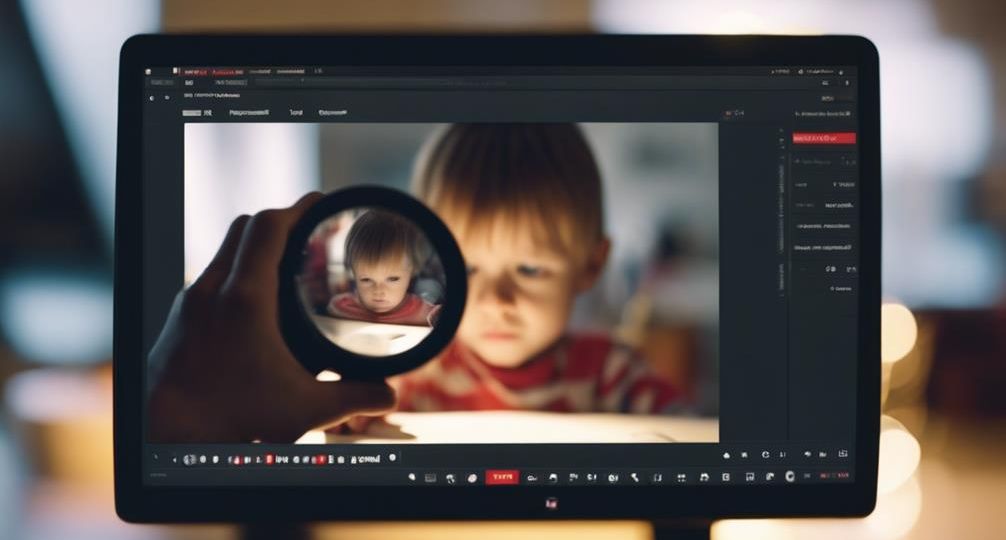
Why can’t kids see YouTube comments?
While you might argue that preventing kids from seeing YouTube comments hinders their freedom of expression, it’s important to consider the real purpose behind this restriction. YouTube, cognizant of the potential toxicity that often pervades online comments sections, deems it crucial to protect its young users from harmful and inappropriate content.
But how does this decision impact the overall experience of these young netizens? Let’s explore the critical intersection of child safety, internet freedom, and the role of digital platforms in shaping this delicate balance.
Key Takeaways
- YouTube disables comments on children’s videos to ensure a safer environment and reduce potential child exploitation and privacy invasion.
- YouTube Kids, a child-friendly version of YouTube, provides a controlled environment with age-appropriate content and intuitive user interface.
- Advanced AI algorithms are utilized in content moderation, filtering out inappropriate content and limiting social engagement features for child safety.
- Parental controls and content moderation policies, including Restricted Mode and Ad Controls, work together to create a safer digital environment for younger viewers.
Understanding YouTube’s Children Policy
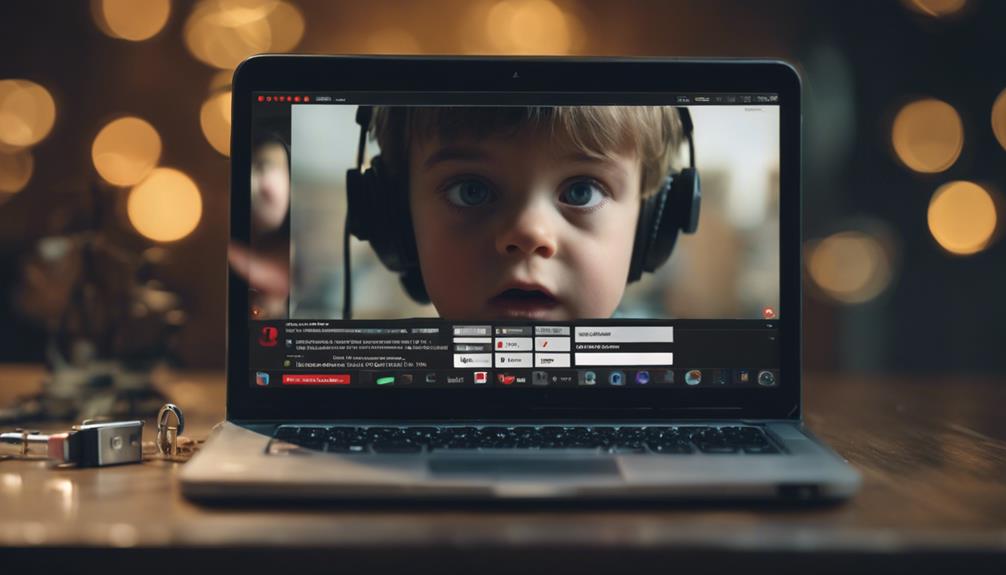
In light of protecting children’s privacy, it’s crucial to understand that YouTube has implemented a policy where comments are disabled on videos made for kids. This innovative measure is a direct response to the challenges of child exploitation and privacy invasion, often prevalent in the digital world.
You see, the platform, while providing a wealth of educational and entertaining content, is also a breeding ground for threats to a child’s privacy. The comment section, previously a potential hotbed for inappropriate interactions, is now off-limits, ensuring a safer environment for your children. This proactive move by YouTube is a testimony to the company’s commitment to tackling child exploitation.
Moreover, the privacy invasion risk is substantially reduced. With no avenue for strangers to interact directly with children through their comments, the potential for privacy breaches decreases. This policy doesn’t suppress the spirit of innovation; instead, it encourages users to find new, safer ways to engage and share experiences.
In essence, YouTube’s decision to disable comments on children’s videos is a progressive step towards ensuring a secure online environment. It’s a testament to their dedication to safeguard children from exploitation and privacy invasion.
The Role of COPPA
While YouTube’s policy is a significant move, it’s also important to acknowledge the role of the Children’s Online Privacy Protection Act (COPPA) in shaping these rules and regulations. This federal law sets strict limitations on how websites and online services can collect information from kids under 13. COPPA limitations, therefore, play a large part in defining how YouTube, and platforms like it, manage user interactions and maintain privacy concerns.
COPPA’s intent is to give parents control over what information is collected from their children online. To comply, YouTube has had to innovate and adapt, disabling comments on videos primarily directed at children. This is a direct response to the privacy concerns COPPA raises, by limiting potential exposure to inappropriate or harmful content in the comment section.
However, it’s crucial to note that while COPPA provides a robust framework, it’s not infallible. It’s up to tech companies, parents, and society at large to continue seeking ways to improve the balance between engaging online experiences for kids and their safety and privacy. The role of COPPA in this ongoing dialogue is undeniably crucial.
YouTube Kids: A Safer Alternative
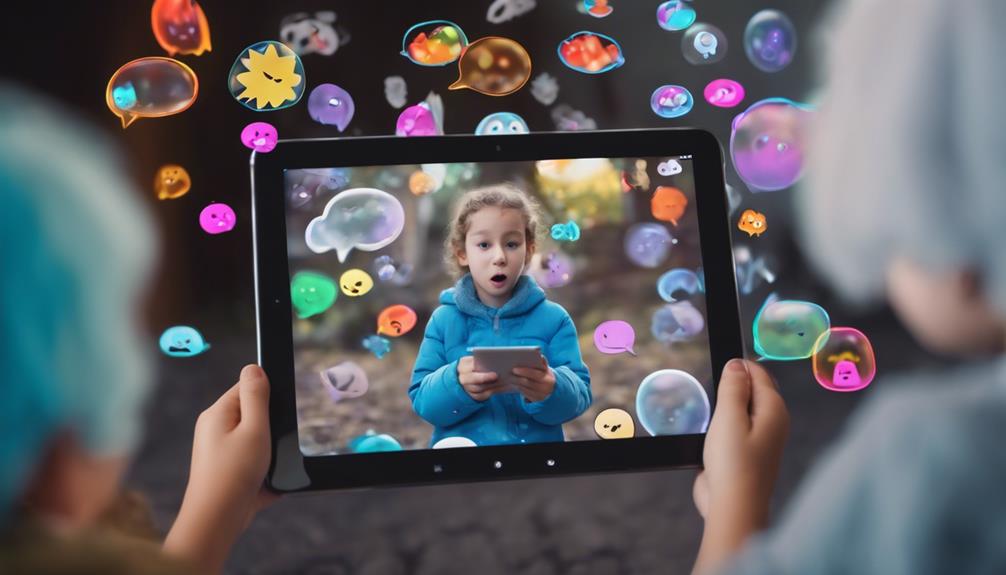
As you explore safer alternatives for your child’s online engagement, YouTube Kids emerges as a noteworthy option. This platform is specially tailored with features to ensure child safety, offering a more controlled environment for young audiences.
It’s important to familiarize yourself with these features and understand how to navigate the parental controls for optimal child protection.
Understanding YouTube Kids
To understand YouTube Kids, a safer alternative to the standard YouTube platform, you need to delve into its unique features designed specifically for kid-friendly viewing. This platform addresses concerns about kids’ privacy and imposes age restrictions to ensure that content is appropriate for its young audience.
Here are three key attributes that set YouTube Kids apart:
- Simplified Interface: YouTube Kids has an intuitive, easy-to-navigate interface designed specifically for children. It’s user-friendly, making it easy for kids to find their favorite shows and discover new content.
- Parental Controls: Parents have the ability to monitor and control what their children watch, ensuring a safe online environment.
- Content Filtering: YouTube Kids uses automated systems and human reviewers to filter out adult content, providing a more child-friendly browsing experience.
Embrace this innovation for a safer, kid-friendly YouTube experience.
Features Ensuring Child Safety
Building on the basic understanding of YouTube Kids, let’s now scrutinize the specific features that ensure child safety on this innovative platform.
YouTube Kids is designed to foster digital etiquette and cyber literacy, promoting safe online interactions for younger audiences. This platform filters out inappropriate content, making sure your child is exposed to age-appropriate videos only.
In addition, it limits the social engagement features commonly found on the standard YouTube. For instance, your child can’t view, post, or interact with comments, a feature that helps protect them from potential cyber threats.
YouTube Kids also encourages learning through curated content categories like ‘Learn’, ‘Explore’, and ‘Music’. It’s a platform that beautifully blends fun with safety, ensuring your child’s digital journey is both engaging and secure.
Understanding and utilizing the parental controls on YouTube Kids is critical for maintaining a safer and more appropriate viewing experience for your child. With these controls, you can ensure that the content your child consumes is age-appropriate and safe from potentially harmful comments or material.
Here are three simple steps to help you navigate the parental controls:
- Controlled Browsing – Enable this feature to handpick the videos, channels, or collections that your child can see.
- Age Restrictions – Set up age limits on your child’s profile to ensure they access content suitable for their age group.
- Search Settings – You can control whether your child can search for content on their own.
The Nature of Internet Comments

Delving into the nature of internet comments, it’s crucial to recognize their unpredictable and often volatile quality, which can significantly impact a young viewer’s online experience. Notably, the comment section can be a breeding ground for troll behavior – individuals who post inflammatory, irrelevant, or offensive remarks with the intent to provoke reactions.
Understanding this, it’s important to consider how these comments can shape a child’s perspective of the virtual world. The comments they read can influence their thoughts, feelings, and behavior, sometimes in adverse ways. For instance, a negative comment can disrupt a learning experience, while a positive one can inspire creativity and curiosity. This unpredictable nature of comments is a double-edged sword – it can either nurture or hinder a child’s development.
In this age of digital innovation, protecting young minds from the harsh realities of internet comments is a growing concern. With this in mind, it’s no surprise that YouTube, a popular platform among children, opts to hide comments from its youngest viewers. This approach seeks not to stifle communication, but rather to ensure a safer, more controlled environment for children to explore and learn.
How YouTube Moderates Content
Given the precarious nature of internet comments, it’s worth examining how YouTube, a platform favored by children, moderates its content to ensure a safe and healthy environment. YouTube’s moderation strategy includes a blend of artificial intelligence and human reviewers to strike a balance between algorithm transparency and content censorship.
Algorithm Transparency: YouTube uses machine learning algorithms to scan and flag potentially inappropriate content. This automated process is crucial in handling the vast quantity of content uploaded every minute. However, the company is cautious about sharing the specifics of these algorithms, citing the risk of malicious users gaming the system.
Human Reviewers: Despite the sophistication of AI, human judgment remains invaluable. YouTube employs thousands of reviewers worldwide to evaluate flagged content, ensuring it doesn’t violate community guidelines.
Content Censorship: YouTube’s moderation doesn’t just stop at comments. It extends to video content, with strict guidelines on sensitive subjects. Critics argue this can sometimes border on censorship, but YouTube maintains it’s necessary to create a safe platform.
YouTube’s moderation policies aren’t perfect, and they’re continually evolving. But they’re a critical part of ensuring the platform remains a safe space for its diverse range of users, including kids.
Parental Control Features on YouTube
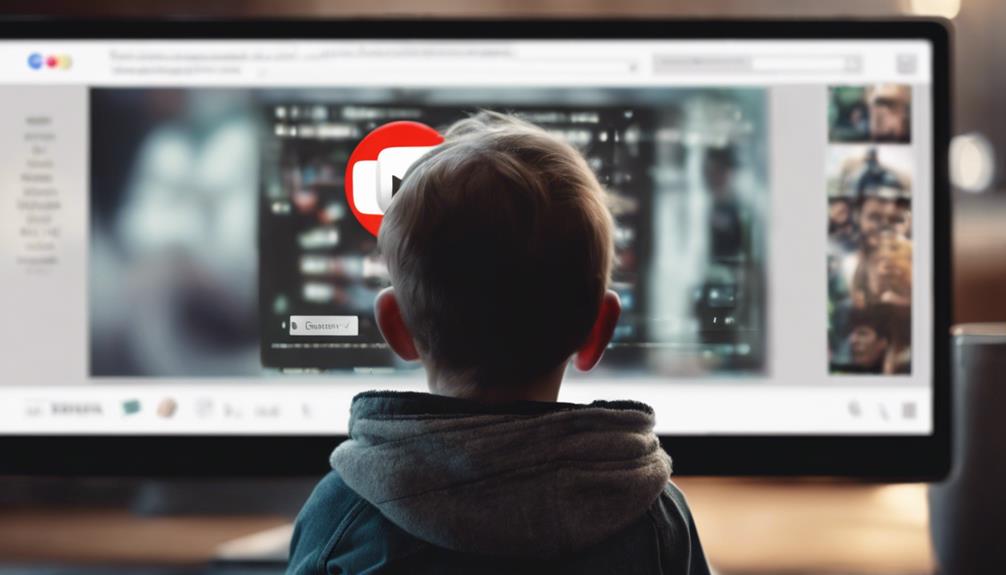
Often, parents worry about what their children might encounter on YouTube, but the platform’s parental control features can provide a much-needed safety net. These features empower you to create a safer digital environment for your little ones, however, it’s not without its challenges.
One key issue is ‘Age Verification Challenges’. YouTube’s age verification relies on user honesty, which can be bypassed by tech-savvy kids. Another concern is ‘Influencer Endorsements’. Kids may not discern between genuine endorsements and paid promotions, which can impact their perception and preferences.
Here’s a brief overview of YouTube’s control features:
| Feature | Benefits | Challenges |
|---|---|---|
| Restricted Mode | Limits access to mature content | Not 100% accurate |
| YouTube Kids | Curated content for children | Age Verification Challenges |
| Ad Controls | Limits ad types | Influencer Endorsements |
The Impact on Young Users
While the benefits of YouTube’s control features are clear, it’s crucial to understand the potential impacts they may have on young users. This change nudges them towards becoming responsible digital citizens, understanding the importance of consuming age-appropriate content, and appreciating the value of respectful online communication.
- Digital Citizenship: With comments out of sight, kids are encouraged to focus on the content rather than negative or harmful discussions. This, in turn, promotes the development of better digital citizenship skills, fostering a respectful online presence.
- Age Appropriate Content: By limiting access to potentially harmful comments, YouTube helps ensure kids engage with age-appropriate content. This precautionary measure safeguards their digital experience, minimizing exposure to inappropriate language or adult-themed discussions.
- Respectful Communication: With comments hidden, kids are less likely to mimic the often disrespectful and harmful language found in comment sections. This can help foster more respectful online communication habits.
The Role of AI in Content Moderation
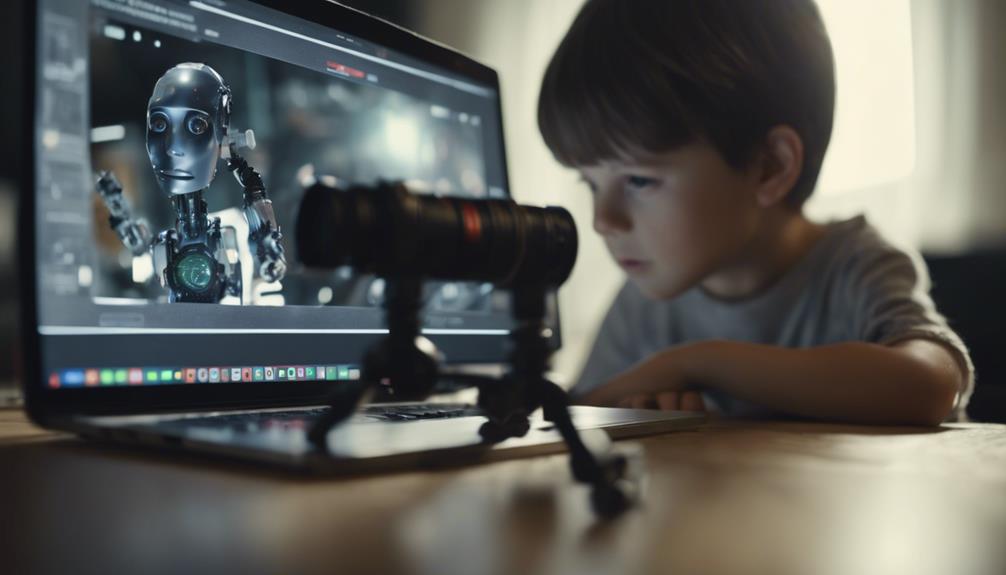
You may wonder how artificial intelligence (AI) enters the picture.
AI plays a significant role in content moderation, especially in large platforms such as YouTube.
It’s not only about blocking inappropriate comments, but also about understanding and filtering content to create a safer online environment for younger users.
AI’s Influence on Moderation
Artificial intelligence plays a pivotal role in moderating content on platforms like YouTube, ensuring a safer and more age-appropriate environment for young viewers. With concerns around AI ethics and a growing demand for algorithm transparency, it’s clear that AI’s influence on moderation isn’t just technical, but also societal.
Here’s a brief rundown on how it works:
- AI uses complex algorithms to scan, analyze, and categorize content in real-time.
- It applies rules defined by YouTube’s age restrictions and community guidelines.
- Finally, it automatically hides or removes content deemed inappropriate.
Content Filtering by AI
In managing content on platforms like YouTube, AI’s role is crucial. It filters and moderates user-generated content to maintain a safe online environment. However, the AI ethics come into play here. It’s vital for the technology to be unbiased and respectful of users’ rights while executing its duties.
Misinformation dilemma is another challenge. AI must distinguish between truth and falsehood accurately, ensuring that kids are shielded from harmful content and misinformation. This innovative approach to content moderation holds promise, but it’s not without its complexities.
As AI continues to evolve, so too must its ethical framework and capabilities to battle the misinformation dilemma. Let’s remain cognizant of the incredible potential and the inherent challenges this technology brings.
Other Platforms’ Approach to Child Safety
While YouTube has its unique approach, it’s interesting to note how other platforms tackle the issue of child safety online.
Facebook, for instance, has a comprehensive strategy in place. They’ve designed their interface to be user-friendly and safe for kids. Facebook’s safety measures include robust reporting tools to flag inappropriate content and stringent privacy settings to protect personal information.
TikTok, on the other hand, applies strict age restrictions. Users under the age of 13 can only access a limited version of the app, TikTok for Younger Users, which is a curated experience that prioritizes safety and age-appropriate content.
Let’s break down these measures:
- Facebook’s Safety Measures: Facebook uses advanced algorithms to filter out harmful content and offers a detailed report system for users to flag anything they find disturbing.
- TikTok’s Age Restrictions: TikTok’s strategy is more age-focused. They’ve created a separate platform for younger users, ensuring they’re exposed only to suitable content.
- User Empowerment: Both platforms empower users. They encourage users to report inappropriate content, thus fostering a safer online community.
YouTube’s Response to Criticism

You may be wondering how YouTube has responded to criticism over child safety.
We’re about to explore how the platform has taken measures to protect children, how it handles inappropriate content, and how it addresses cyber bullying.
Let’s consider these points in the context of the ongoing debate about children’s online safety.
YouTube’s Protective Measures
Responding to mounting criticism, YouTube has implemented several protective measures to ensure a safer environment for its younger viewers. You’ll notice a significant shift in comment moderation techniques. YouTube now promptly disables comments on videos featuring minors, limiting potential cyber threats. This marks a dedicated effort towards cybersecurity education, giving you the peace of mind that your child’s online experience is safeguarded.
Moreover, YouTube has introduced the following measures:
- Machine Learning Algorithms: These are designed to detect and remove harmful content before it reaches your child.
- YouTube Kids App: A specialized, child-friendly platform that provides age-appropriate content.
- Parental Control Features: These enable you to monitor and control what your child views, ensuring an appropriate, engaging online experience.
Handling Inappropriate Content
Despite these protective measures, there have been instances where inappropriate content slips through the cracks, prompting YouTube to face criticism and reevaluate their content moderation strategies.
In an era where digital literacy is paramount, you can understand why YouTube’s response to content censorship is crucial. The platform has taken robust steps to ensure that children are shielded from harmful content. YouTube’s algorithms are constantly evolving, becoming more sophisticated in identifying and removing unsuitable material.
However, it’s essential to recognize that no system is infallible. As consumers and innovators, it’s our collective responsibility to promote safe online environments and foster digital literacy. Our vigilance, combined with YouTube’s ongoing efforts, will increase the chances of maintaining a safer online space for kids.
Addressing Cyber Bullying
In light of increasing concerns about cyberbullying, YouTube has taken decisive action to combat this issue, demonstrating their commitment to providing a safer online environment for children. They’ve considered the alarming cyber bullying statistics and have responded in a number of innovative ways.
Here’s what they’ve done to make a difference:
- Content Monitoring: They’ve increased their team of content monitors, ensuring that harmful comments get flagged and removed promptly.
- Improved Reporting Systems: YouTube has enhanced its reporting mechanisms, enabling users to report instances of cyberbullying more effectively.
- Online Etiquette Lessons: They’ve initiated a series of online lessons teaching users about respectful interaction on the platform.
With these measures, YouTube is proactively addressing cyberbullying, making it a safer place for everyone.
The Future of Child Safety on YouTube

As we gaze into the horizon of child safety on YouTube, it’s clear that proactive measures are necessary to ensure the wellbeing of our youngest viewers. The platform is evolving, and so must our approach to protecting children. It’s not just about restricting access; it’s about educating them. Digital Literacy Education is a key element in this paradigm shift.
This new wave of protection isn’t about blanket censorship, but about fostering an environment with age-appropriate content. This means creating a safer space for children while also respecting their growing curiosity. It’s about guiding them, not isolating them. It’s about teaching them to navigate the digital landscape safely and responsibly, while still allowing them to explore and learn.
The future of child safety on YouTube is a delicate balance. It’s about understanding the digital world our children inhabit. It’s about equipping them with the knowledge and tools they need to navigate this world. And most importantly, it’s about ensuring their online experiences are safe, positive, and productive. As we move forward, these will be our guiding principles.
Expert Tips for Online Safety
Navigating the vast digital landscape can be daunting, but with the right tools and knowledge, you’ll be more equipped to protect your kids online. In an age where digital literacy is as crucial as traditional literacy, it’s important to be proactive in ensuring your children’s safety. This involves teaching them about cyber ethics and how to navigate the internet responsibly.
Here are three expert tips to consider:
- Educate about Cyber Ethics: It’s crucial to educate kids about the ethical use of the internet. Discuss the importance of respecting others’ privacy, understanding the consequences of online actions, and staying away from illegal activities.
- Promote Digital Literacy: Teach your kids how to distinguish between reliable and unreliable sources. Help them understand the difference between real and fake news. Encourage them to think critically about the information they consume online.
- Use Parental Controls: Make use of parental control tools available on most platforms. These can help manage what content your child sees, their screen time, and even who they can interact with.

